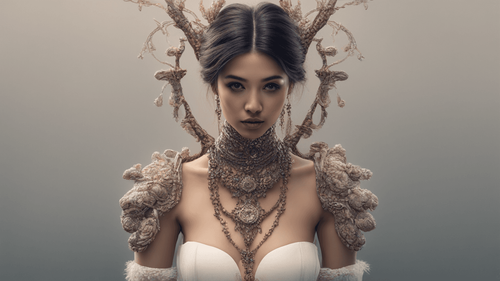
Introduction
In today's rapidly evolving digital landscape, artificial intelligence (AI) continues to make astounding strides, impacting various sectors from healthcare to entertainment. One particularly intriguing application of AI is its ability to transform ordinary photographs into awe-inspiring pieces of art. This article delves into the realm of photo to AI generated art, exploring the technology behind it, its creative potential, and its implications for both artists and enthusiasts.
Understanding Photo to AI Generated Art
AI-generated art, often referred to as "neural art," involves leveraging machine learning algorithms to manipulate images and imbue them with artistic styles reminiscent of famous painters, such as Picasso, Van Gogh, or even entirely original artistic styles. This transformative process melds the creativity of human artists with the computational prowess of AI, resulting in an entirely new dimension of visual expression.
How AI Transforms Photos into Art
The process of turning a photograph into an AI-generated artwork is a blend of sophisticated algorithms and neural networks. Here's a brief breakdown:
Data Preprocessing and Feature Extraction
Before AI can work its magic, the input photograph undergoes preprocessing. This step involves cleaning the image, extracting key features, and preparing it for analysis.
Neural Networks and Style Transfer
The heart of the process lies in neural networks. Convolutional Neural Networks (CNNs) are often used to capture the artistic styles from reference artworks. These networks learn intricate brushwork, color palettes, and composition techniques.
Optimization and Generation
During optimization, the algorithm refines the input photograph's features to match the desired style while maintaining its essence. This involves minimizing a loss function that measures the difference between the photograph's original features and the target style features.
Creative Freedom and Exploration
Photo to AI generated art opens up a world of creative possibilities for both artists and enthusiasts. This technology encourages experimentation, allowing artists to blend their unique vision with iconic styles, producing hybrid creations that challenge artistic norms.
Applications and Implications
The convergence of photography and AI-generated art brings about a host of applications and implications:
Personalized Artwork
Enthusiasts can now possess personalized artwork that seamlessly blends with their preferred artistic style. This paves the way for unique home decor and personalized gifts.
Artistic Collaboration
AI-generated art can be a powerful tool for artistic collaboration. Artists can incorporate AI's interpretations into their works, leading to unprecedented hybrid creations.
Preserving Cultural Heritage
AI-generated art can be harnessed to restore and revitalize cultural heritage by recreating damaged or lost artworks.
Ethical Considerations
The rise of AI-generated art sparks discussions about authenticity, authorship, and the blurring boundaries between human and machine-created art.
FAQs
How Accurate is AI-generated Art?
AI-generated art's accuracy largely depends on the quality of the neural networks and reference styles used. High-quality networks yield more accurate and aesthetically pleasing results.
Can Anyone Create AI-generated Art?
Absolutely! While technical knowledge helps, many user-friendly applications make the process accessible to artists and non-artists alike.
Is AI Art a Threat to Human Creativity?
AI art should be seen as a complementary tool rather than a threat. It can inspire new creative directions and enhance human artistic endeavors.
What About Copyright and Ownership?
Copyright concerns arise when AI-generated art closely replicates an existing artwork. Determining ownership and rights can be complex and varies by jurisdiction.
Can AI Replace Traditional Art Forms?
AI-generated art doesn't seek to replace traditional art but rather to coexist and collaborate, fostering innovative crossroads between technology and creativity.
How Can I Learn More About AI-generated Art?
There are numerous online resources, tutorials, and communities that offer insights, tips, and techniques to explore and refine your AI-generated art skills.
Conclusion
The marriage of photography and AI-generated art has given birth to a captivating and transformative medium. The technology's ability to blend artistic styles, foster creativity, and open new avenues for expression is a testament to the endless possibilities that AI brings to the art world. As we continue to explore and refine the capabilities of AI, we can anticipate even more astonishing breakthroughs in the realm of visual artistry.